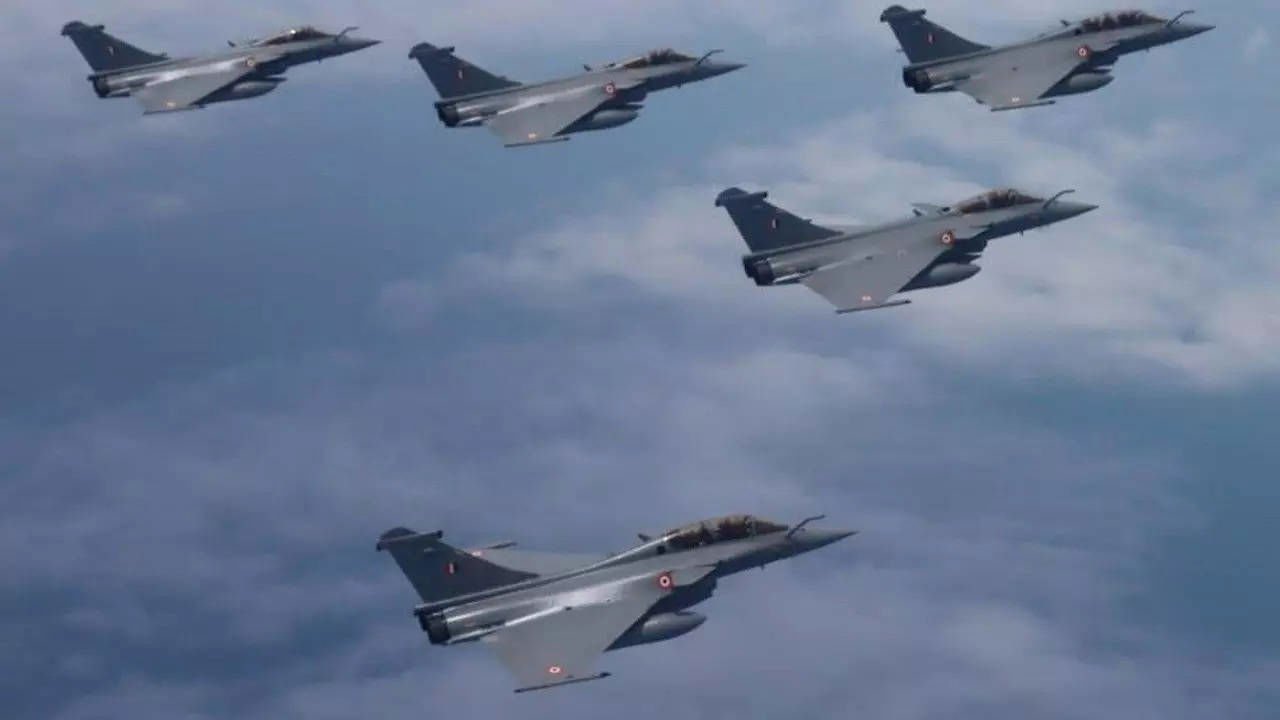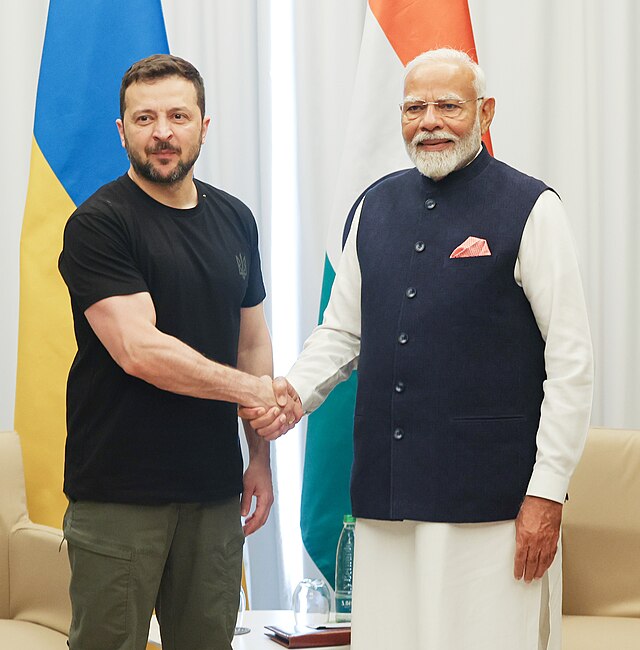
IAF’s Fighter Squadron Drawdown And The Mitigation Plan

“While, IAF has plans to steadily induct locally made fighter jets like Tejas Mk1, Mk2, and AMCA, the need for 114 jets under Multi-Role Fighter Aircraft (MRFA) will remain, due to planned retirement of fighter fleet types like Jaguar, Mirage-2000, and Mig-29 in next few years”.
IAF Chief Air Chief Marshal V R Chaudhari (while speaking at Agenda Aajtak)
Introduction
The Parliamentary Standing Committee on Defence (SCOD) is a department-related standing committee (DRSC) of selected members of parliament, constituted by the Parliament of India, for the purpose of legislative oversight of the defence policies and decision-making of the Ministry of Defence (MOD). The Committee recently carried out its yearly review and made public its thirty-sixth report. The issue of the dwindling Fighter squadron strength of the Indian Air Force finds a place in the report yet again, triggering a debate in social media and amongst the defence analysts’ community.
The drawdown has not occurred overnight and it is not that the issue has not been addressed earlier. Indian Air Force always has two plans i.e. plan to carry out the allotted tasks with existing resources and a future plan for capability enhancement and development. Slippages have occurred in the execution of capability development mid-term/long-term plans resulting in a state where the fighter aircraft strength has come down to a low figure of around 30 odd squadrons as against the authorised strength of about 42 squadrons. There are several reasons for the present situation, however, prudence demands that the main concern should be to regain the required strength as soon as possible rather than mulling over past slip-ups.
Aspects Related to Drawdown Mitigation
Authorised Fighter Squadron Strength. It is a truism that an Air Force needs fighter aircraft in adequate numbers to be combat-ready. It is a matter of concern that the Indian Air Force (IAF), which is the world’s fourth largest, is deficient in fighter aircraft. Various calculations have been done in the past and suggestions have been made regarding the number of fighter aircraft squadrons required by the IAF. Most of the analysts conclude that while the authorised strength is 42 squadrons, the minimum required is 45 squadrons. These figures may go up to even 60 in the future as both adversaries keep growing in their operational potential.
Present Status & Future Outlook. Fighter Aircraft have a specified Total Technical Life (TTL) of about 25 years, extendable to perhaps 40 years with judicious mid-life upgrades. Since the acquisition process takes many years, replacements for each fleet need to be initiated well before the anticipated time of phase-out. The IAF today is down to about 30 odd fighter squadrons, and additionally, several frontline aircraft in the inventory (including the Jaguars, Mirage-2000, and MIG-29s) will begin phasing out by the end of the decade. A drawdown mitigation plan does exist and is reviewed periodically, however, inductions are slow as compared to phase-outs resulting in a reduction in overall strength. Two major factors are responsible for the IAF’s plight today – delays in procurement of the Medium Multi-Role Combat Aircraft (MMRCA) and delays in the development and operationalisation of indigenous fighter aircraft Tejas.

Procurement Dilemma. Almost three decades back the proposal was put up for going in for licensed production of Mirage 2000 aircraft by Hindustan Aeronautics Limited (HAL). In 2003, Defence Acquisition Council (DAC) ruled in favour of a global tendering process. The process for procurement of 126 MMRCA, possessing 4.5 generation capabilities was initiated with the stated intent of inducting the first aircraft by 2010. After inordinate delays, the Rafale aircraft was shortlisted finally in 2012 and in March 2014, HAL and Dassault signed an agreement for licensed production of the Rafale in India. However, protracted contract negotiations and wrangling about accountabilities of time schedules and warranty liabilities dragged on interminably. In April 2015, the government decided to acquire 36 Rafale jets from France in a fly-away condition. This decision sounded the death knell of the 126 MMRCA deal. Two squadrons of Rafale aircraft have been inducted, however, the number is far short of the 126 aircraft shortfall perceived more than two decades ago, with the shortfall growing even more in the intervening years. An RFI was released in April 2018, by the MoD for the acquisition of 114 Multi-Role fighter Aircraft (MRFA). The procurement process is still in progress.
Indigenous Effort. The LCA program originated in 1983 with the goal to develop a new light combat aircraft to replace the aging IAF MiG-21 fighter variants. After much delay and more than three decades later the first squadron was inducted into the IAF in 2016. Of the 40 LCA Mk I aircraft initially ordered by IAF, 20 are in Initial Operational Clearance (IOC) and 20 in Final Operational Clearance (FOC) status. IAF has also placed an order for 83 LCA Mk 1A aircraft. Work is in progress for the development of LCA Mk2 and 5th generation Advanced Medium Combat Aircraft (AMCA).


Prevailing Challenges. A nation’s military aspirations have to be in consort with its socio-economic condition and likely threats. India is a major regional player and due to its unique geographical location and geo-political environment, India faces a collusive threat (from its two nuclear-powered inimical neighbours) with significant chances of military conflict. Therefore, her national interest dictates that the country be able to deter both her inimical neighbours from any military misadventure either singly or collusively. Although land borders would continue to be the main reason for the dispute, the security of the IOR region would be a major security necessity. IAF would be required to offer options to meet India’s domestic and regional security requirements.
The Air Threat. For a considerable time, the IAF enjoyed an edge in modern combat aircraft over its rivals – the Chinese People’s Liberation Army Air Force (PLAAF) and the Pakistan Air Force (PAF). That no longer holds good. The PLAAF is transforming rapidly and China is investing heavily in aerospace Research and Development and aircraft manufacture. They have two home-grown stealth fighters (J-20 and J-31). They are also developing the H-20 stealth bomber and a host of attack helicopters and Unmanned Aerial Vehicles (UAVs). Pakistan continues to be in collusion with China. PAF has inducted Chinese J-10 and JF-17 aircraft and its strength is on the rise. In such a scenario it is imperative that the fighter squadron strength of the IAF is quickly rebuilt to the authorised level.
Deterrence Value. The primary aim of defence forces is to provide the necessary deterrence. The minimum deterrence value depends upon three major factors i.e. number of enemies, the enemy’s capabilities, and their attitude. Deterrence includes both military capability and the capacity to wage war. Demonstrated will to use the military as a tool for statecraft is another important factor. In our case, the air capability has been steadily increasing over the years, however, there is an urgent need to enhance the deterrence value.
Balanced Force. Air Force is a technology-intensive service and requires a continuous infusion of modern cutting-edge equipment and technology. New state-of-the-art equipment is costly and affordability is an important factor for consideration. IAF generally maintains a reasonable mix of a new state-of-the-art, refurbished/upgraded, and old legacy platforms and equipment. Balance also needs to be maintained between quality and quantity.
Multiple Inventories. IAF maintains a very diverse inventory of fighter aircraft and equipment including Russian SU 30 MKI, MiG-21, and MiG 29; French Rafale and Mirage 2000; British Jaguar; and indigenous LCA. The sources increase further if fixed-wing combat support aircraft, helicopters, and unmanned platforms are considered. So many types of fighters cause a training, logistics, and maintenance nightmare, however, there are some advantages as well.
Self-Reliance. The recent Ukraine conflict has reinforced the lesson that self-reliance is an absolute necessity as far as military power is considered. Indian Air Force firmly believes that indigenisation reduces our dependence on foreign sources and leads to the economic growth of the nation and has always encouraged and supported indigenisation. IAF has been operating indigenously built aircraft and also aircraft built in India under license production, giving an impetus to the indigenous industry. It includes the Induction of Ajeet and HF-24 Marut ac in the past, and support to and induction of indigenous LCA (Tejas) and its variants.

Mitigation Plan. The drawdown mitigation plan essentially includes indigenous aircraft induction and speedy procurement of MRFA aircraft. It includes 4 squadrons of Tejas Mk1A already on order (likely to be built by 2025-27), 6 squadrons of Tejas Mark 2 aircraft (likely to be built by 2032), 6 squadrons of AMCA (likely to be built by 2035-36), and 6 squadrons (114 aircraft) of MRCA.
Time Lines. The draw-down arrest and reversal of the trend depend essentially on the indigenous development and production timelines and urgency displayed in the procurement of MRFA. Going by past experience, the stipulated timelines seem to be highly optimistic, unless various components of the eco-system are able to put their act together and step up the deliveries.
Way Ahead
The question being debated is when the IAF would reach its authorised fighter aircraft strength. Several estimates have been professed, but one thing is sure it won’t be possible by the year 2030, and at best there could be a reversal of the trend and a marginal increase in numbers. Later around 2035, the new inductions will start getting offset by the phase-out of the older aircraft. Recommendations for the way ahead are as follows:-
- The time for “Gun vs Butter” debate is over, and prevailing circumstances demand some hard decisions about military spending.
- A wholehearted and all-around effort is required to meet the challenge.
- While effort is being made to meet the target of authorised strength, a detailed study needs to be carried out to ascertain actual realistic requirements taking present and future circumstances and challenges into consideration.
- Self-reliance is an absolute necessity and needs to be supported and achieved.
- The minimum deterrence value needs to be stipulated and maintained while supporting indigenisation (even by procurement from abroad if required).
- A balance needs to be maintained between technology levels (a reasonable mix of new, upgraded, and old vintage), and the quality and quantity of platforms.
- The development process of indigenous Tejas Mk2 and AMCA needs to be speeded up.
- The production capability of HAL and DPSUs needs to be stepped up.
- The procurement of 114 MFRA needs to be hastened up.
***************************************************************************************************************************
References:-
- https://loksabhadocs.nic.in/lsscommittee/Defence/17_Defence_36.pdf.
- https://theprint.in/defence/even-after-rafale-and-other-inductions-iaf-will-have-only-half-of-42-squadron-target-by-2042/184020/
- https://airpowerasia.com/2020/04/27/iaf-growth-and-indigenization-challenges/
- https://www.financialexpress.com/defence/iaf-to-vault-multi-role-fighter-aircraft-program-under-buy-global-make-india-114-aircraft-in-the-pipeline-intact/2548146/
- https://carnegieendowment.org/2016/03/28/troubles-they-come-in-battalions-manifold-travails-of-indian-air-force-pub-63123
- https://idrw.org/indigenous-fighters-cant-fill-in-on-behalf-of-mrfa-iaf-chief/
- http://www.indiandefencereview.com/news/rebuilding-the-combat-fleet-of-the-iaf-to-42-squadrons/
- http://www.indiandefencereview.com/news/strength-lies-in-numbers-rebuilding-the-combat-fleet-of-the-iaf/
- https://www.thehindu.com/news/national/explained-the-dwindling-fighter-strength-of-the-iaf/article65711688.ece
- https://euro-sd.com/2023/03/articles/29983/the-indian-air-forces-falling-squadron-strength/
- http://www.indiandefencereview.com/idr-issues/?issue_id=236
Disclaimer
The opinions expressed in this article are the author’s own and do not reflect the views of Chanakya Forum. All information provided in this article including timeliness, completeness, accuracy, suitability or validity of information referenced therein, is the sole responsibility of the author. www.chanakyaforum.com does not assume any responsibility for the same.
Chanakya Forum is now on . Click here to join our channel (@ChanakyaForum) and stay updated with the latest headlines and articles.
Important
We work round the clock to bring you the finest articles and updates from around the world. There is a team that works tirelessly to ensure that you have a seamless reading experience. But all this costs money. Please support us so that we keep doing what we do best. Happy Reading
Support Us





















POST COMMENTS (0)